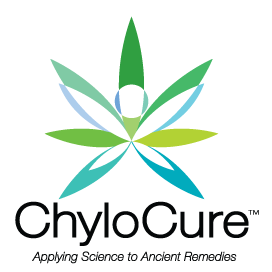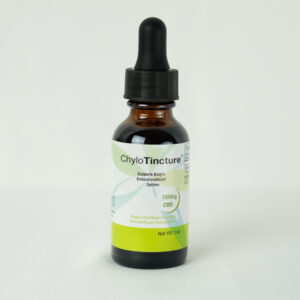Summary of Superiority of CBDa (cannabidiolic acid) over CBD (cannabidiol)
Formerly thought to be the inactive natural precursor of CBD, CBDa is now being recognized by the scientific and cannabis communities for its own unique and powerful attributes.
Listed here are several validating observations regarding pharmacologic CBDa’s advantages over CBD, and the future market potential of stabilized acid cannabinoid containing products like Chylobinoid®:
- A study in 2013 by EM Rock and LA Parker observed the effectiveness of CBDa as an anti-nausea and anti-emetic treatment in rats and shrews. Experiments testing for the minimally effective dose of CBDa to reduce gaping reaction in shrews and tongue protrusions in rats (surrogate markers for human nausea and vomiting) showed that the amount of CBDa necessary to decrease nausea is approximately 1000x lower than CBD.
https://www.ncbi.nlm.nih.gov/pmc/articles/PMC3682714/
- In 2017, Raphael Mechoulam, the “Godfather of Cannabis Science,” founded the biotech company EPM to develop EPM 301, a patented and stable synthetic methyl-ester derivative of CBDa. In preliminary studies, EPM 301 (CBDa-O-methyl ester) was found to be effective in managing inflammatory skin disorders, inflammatory bowel diseases, neuropathic pain, nausea and anxiety, obesity, and other metabolic disorders.
“The infamous Dr. Raphael Mechoulam found that while CBDa is more unstable than CBD, it is a thousand times more potent than CBD in binding to a specific serotonin receptor. Mechoulam explained that while everyone is discussing and researching THC and CBD, “these cannabinoids [the THC and CBD] are actually a secondary substance; they only appear later in the plant.” He added, “Originally there is an acid that appears in the plant [like CBDa], and those acids are these mysterious worlds of compounds that are much more potent than cannabinoids [like CBD].”
https://www.veriheal.com/blog/what-are-the-therapeutic-benefits-of-cbda/
https://www.projectcbd.org/science/cbda-raw-story
https://www.sumobrain.com/patents/wipo/Cannabidiolic-acid-cbda-derivatives-uses/WO2021245671A1.html
- GW Pharmaceuticals, now a part of Jazz Pharmaceuticals, shepherded a 100% CBD product through years of development and clinical trials to ultimately receive FDA approval of Epidiolex© in 2018 for the treatment of seizures associated with Lennox-Gastaut syndrome and Dravet syndrome (success clinically defined as decreasing seizure frequency more than 50% in greater than 50% of treated patients).
Based on this validation that a pure cannabidiol product can reliably and reproducibly manipulate the endocannabinoid system (ECS) to achieve positive clinical outcomes, Epidiolex is currently the subject of 290 ongoing clinical studies pursuing additional potential applications using pure CBD. The number of these current studies should be broadly viewed as reflecting the high degree of interest by academia and the pharmaceutical industry in developing additional cannabinoids into FDA-approved drugs in the future.
https://clinicaltrials.gov/ct2/results?cond=epidiolex&term=&cntry=&state=&city=&dist=
GW Pharma also proposed the concurrent and synergistic use of CBDa with CBD for the treatment of epileptic disorders. In a 2017 patent application published before FDA approval of Epidiolex, GW Pharma states that CBDa is more bioavailable than CBD, would be effective at lower doses than CBD, and would work more quickly than CBD in the treatment of drug-resistant epilepsies. Since then, there’s been no further updates or information from GW/Jazz regarding this combination concept, although these observations have been confirmed in preliminary canine studies.
https://patents.google.com/patent/WO2017025712A1/en
https://www.frontiersin.org/articles/10.3389/fvets.2022.939966/full?fbclid=IwAR127cYFJ_T1auQmefXzrUA-LTcTw7jX5gcsF_SfOkSJZb7RKrMeHxSr_xA
- Specifically, Garcia et al. noted in a study of a CBD/CBDa hemp extract that successfully treated refractory canine epilepsy that CBDa had superior pharmacokinetics to CBD in humans and was a much stronger agonist of serotonin receptors as well which greatly contributed to its anti-seizure effects. He also suggested that extracts containing CBDa, CBD and natural terpenes/flavonoids had greater anti-epileptic activity than CBD alone.
- Acid cannabinoids (CBDa, THCa, CBGa) outperformed their neutral counterparts (CBD, THC, and CBG) in terms of PPARγ PPARγ is a recognized critical regulator of lipid and glucose homeostasis, and plays a key role in moderating inflammatory and neurodegenerative diseases.
https://bpspubs.onlinelibrary.wiley.com/doi/full/10.1111/bph.14019
Chylobinoid® (micellar magnesium-cannabidiolic acid or Mg-CBDa) is designed to capture all the advantages of CBDa in an innovative composition containing CBDa, other cannabinoids and natural plant components, and magnesium. As such, Chylobinoid offers significant additional advantages over conventional CBDa products.
- In January 2021, Goerl et al. published “Cannabidiolic acid exhibits entourage-like improvements of anticonvulsant activity in an acute rat model of seizures,” which compared the anti-seizure properties of Chylobinoid, Mg-CBDa and CBD in a maximal electroshock seizure test (MES) rat model. In this study, he found that Chylobinoid was approximately equipotent to CBD and more potent than Mg-CBDa alone which he attributed to the presence of minor cannabinoids in the Chylobinoid product consistent with an “entourage effect”.
https://www.ncbi.nlm.nih.gov/pmc/articles/PMC7855831/
- Regarding a comparison between Raphael Mechoulam’s EPM 301 product and Chylobinoid, although his methyl esterification is a viable stabilizing technology for acid cannabinoids, exploitation of the full pharmacologic benefits inherent in CBDa is superior with Chylobinoid products which utilize the proven and patented advantages of metal coordination chemistry. As previously mentioned, Chylobinoid is a proprietary magnesium infused CBDa-rich micellar complex derived from hemp extract designed to have superior stability and pharmacokinetic properties.
- Given developing trends in the marketplace we believe there’s great commercial potential in creating stable metal coordinated complexes of all acid cannabinoids (CBDa, THCa, CBGa, CBDVa, THCVa, etc.) as outlined in Synthonics patent application below. Patented micellar constructs of these unexploited natural cannabinoid molecules could provide a compelling framework for future drug discovery and development for both nutraceutical and pharmaceutical cannabinoid products. The current literature strongly suggests that acids, in general, are more pharmacologically active than their non-acid congeners, and that “78.6% of FDA oral compounds contained an ionisable group”.
https://patents.google.com/patent/US20220079880A1/en
https://pubs.acs.org/doi/10.1021/jm100118x
https://www.ncbi.nlm.nih.gov/pmc/articles/PMC3641858/
In conclusion, Synthonics has harnessed the advantages of CBDa through Chylobinoid, which is conceptually and practically differentiated from commercial CBD and CBDa products by these specific attributes:
- Unlike CBD and CBDa, molecules which reside in the public domain as natural products, Chylobinoid and other metal coordinated cannabinoid acids are patentable as new compositions of matter.
- CBDa is 1000x more potent than CBD at 5-HT1A receptor sites in pre-clinical animal models. Further testing in humans is ongoing (including efforts by Synthonics) and thus far confirms this significantly greater potency.
- Chylobinoid’s patentable micellar Mg-CBDa structure is chemically stable and resists decarboxylation of CBDa to CBD in addition to possessing other positive attributes.
- Due to its unique micellar composition Chylobinoid is designed to have markedly improved bioavailability over conventional CBD products. In preliminary observational studies, oral Chylobinoid appears to have around 10x the potency of Epidiolex in treatment of refractory seizure patients.
- The complex’s hydrophilicity (in addition to CBDa’s intrinsic lipophilicity, otherwise known as amphiphilicity) largely confers its increased GI absorption and tissue penetration properties with administration.
- Chylocure’s proprietary extraction process permits inclusion of other natural plant cannabinoids into the final product (defined as “full spectrum”) to promote the recognized synergistic concept of the “entourage effect”.
- Formulation flexibility (product created as a unique free-flowing powder) allows production of capsules, creams, balms, tinctures, gummies and other products in the future.
- Chylobinoid powder produced via an elegant, inexpensive, and green extraction process that ensures purity and high-yield production without the use of toxic aromatic solvents. Easily scalable to metric ton production.





